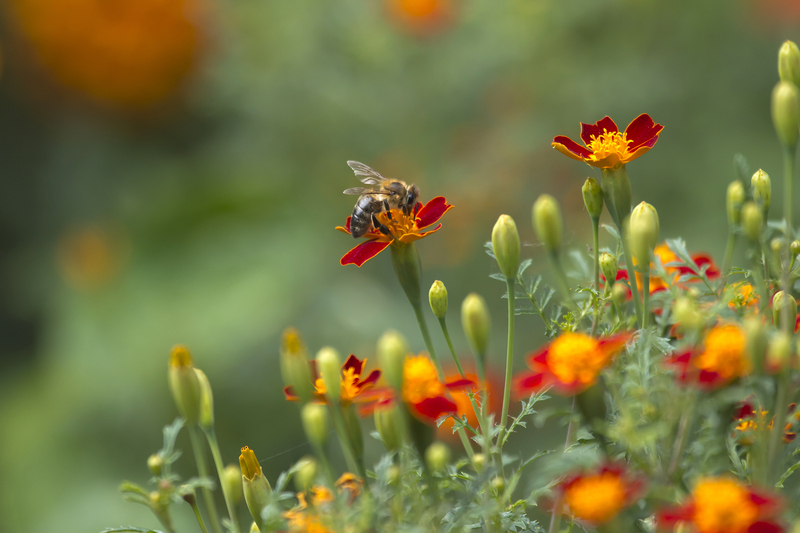How to Prepare Your Garden for Spring Planting
Posted on 18/09/2024

Spring is just around the corner, which means it's time to start thinking about preparing your garden for the upcoming planting season. With the winter frost melting away and warmer weather approaching, now is the perfect time to get your hands dirty and start prepping your garden for a bountiful spring harvest. From cleaning up debris to prepping the soil, here are some essential tips and tricks to help you get your garden ready for spring planting.
1. Clean Up Debris
The first step in preparing your garden for spring planting is to clean up any debris left over from the winter months. This can include fallen leaves, dead plants, and other organic matter that may have accumulated on your garden beds. Not only does this debris make your garden look messy, but it can also harbor pests and diseases that can damage your plants. Use a rake or gardening gloves to remove any debris and dispose of it properly.
2. Prune Trees and Shrubs
Winter weather can often cause damage to trees and shrubs in your garden, so it's important to take some time to prune them before spring arrives. Cut off any damaged or diseased branches using clean pruning tools to prevent the spread of disease. Pruning also helps promote healthy growth and shape for your plants.
3. Test Soil pH and Nutrients
Before you start planting new crops, it's crucial to test your soil's pH level and nutrient levels. Most plants prefer a pH range between 6.0-7.0, so if your soil is too acidic or alkaline, you will need to make adjustments by adding lime or sulfur accordingly. Additionally, adding organic matter such as compost or manure can improve the overall nutrient content of your soil.
4. Prepare Garden Beds
Once you've cleared away debris and pruned trees and shrubs, it's time to prepare your garden beds for planting. Loosen the top few inches of soil and remove any weeds that may have sprouted. This allows for better aeration and drainage for your plants. If you have heavy clay soil, consider adding some sand or organic matter to improve its texture.
5. Plan Your Planting Layout
Before you start sowing seeds or transplanting seedlings, it's essential to have a layout plan for your garden. Take into consideration the amount of sunlight each area receives, the spacing requirements of each plant, and their compatibility with neighboring plants. This will help ensure maximum growth and productivity for your garden.
6. Start Seeds Indoors
If you're planning on growing plants from seed, now is the perfect time to start them indoors. Invest in a quality potting mix and use clean containers to plant your seeds in. Place them in a sunny location and keep the soil moist but not waterlogged. This will give your seedlings a head start before they are ready to be transplanted outdoors.
Pros:
- Preparing your garden for spring planting ensures healthier and more abundant crops.
- It allows you to assess and make necessary adjustments to your soil conditions.
- Pruning trees and shrubs promotes healthy growth and improves their appearance.
- Planning your planting layout can save time, space, and resources in the long run.
- Starting seeds indoors gives you a jump start on the planting season.
Cons:
- Preparing your garden for spring planting can be time-consuming and labor-intensive.
- Testing soil pH and nutrient levels may require additional equipment or services.
- Pruning trees and shrubs incorrectly can cause further damage.
- Planning your planting layout may restrict certain plant choices.
- Starting seeds indoors requires consistent monitoring and care.
Tips:
- Consider using raised beds for easier maintenance and better drainage.
- Use organic fertilizers instead of chemical fertilizers to promote long-term soil health.
- Keep an eye out for early emerging pests such as slugs, snails, and aphids.
- Don't forget to water your garden regularly, especially during dry spells.
- Use companion planting techniques to naturally deter pests and attract beneficial insects.
Takeaways:
Preparing your garden for spring planting is a crucial step in ensuring a successful and productive growing season. By cleaning up debris, pruning trees and shrubs, testing soil conditions, and planning your planting layout, you can create an optimal environment for your plants to thrive. With proper care and maintenance, your garden will be bursting with fresh produce in no time.
Conclusion:
As the cold winter months come to an end, take the time to prepare your garden for spring planting. By following these tips and tricks, you can ensure a healthy and thriving garden that will provide you with plenty of fresh vegetables and flowers throughout the season. So put on your gardening gloves, dust off your tools, and get ready for a rewarding spring harvest!


